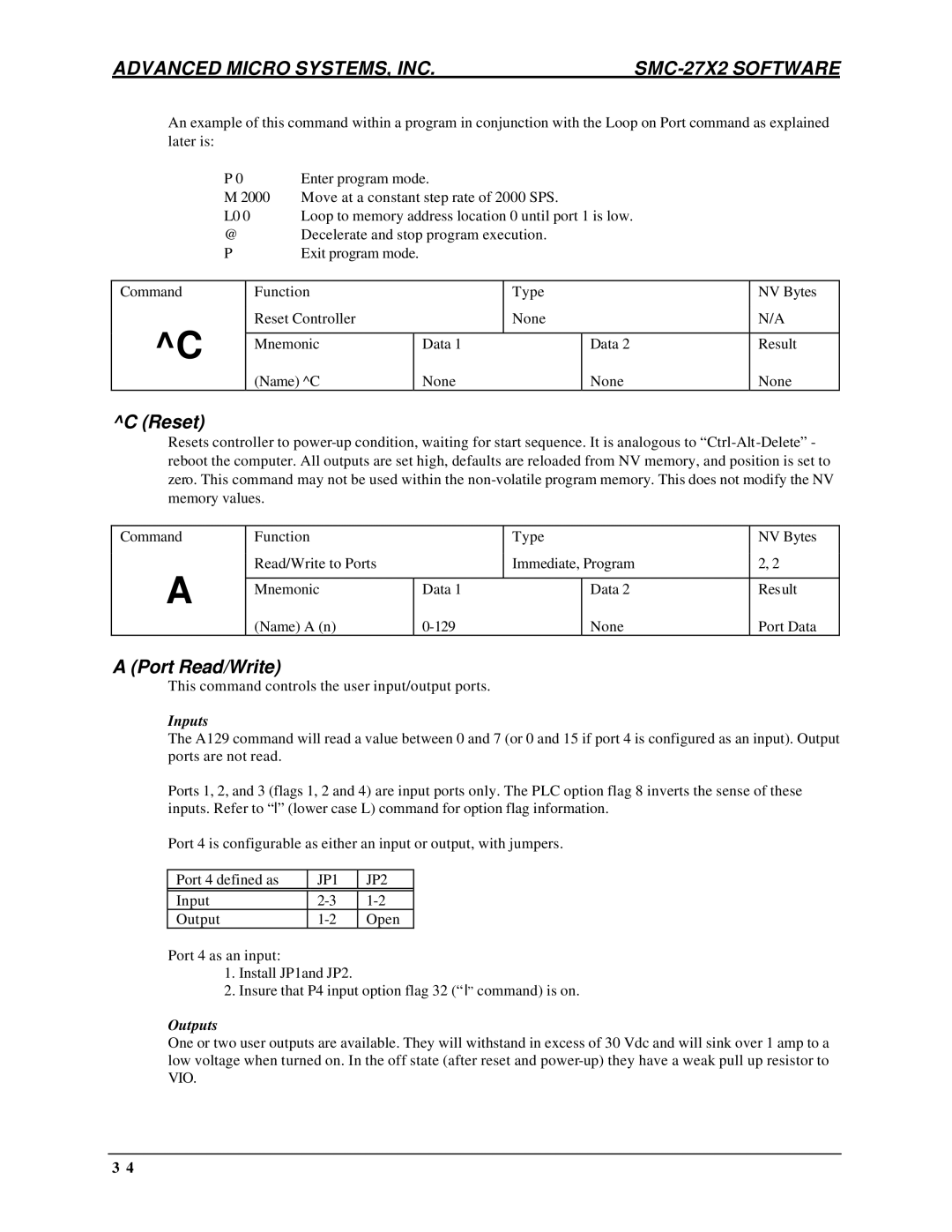ADVANCED MICRO SYSTEMS, INC. |
An example of this command within a program in conjunction with the Loop on Port command as explained later is:
P 0 | Enter program mode. |
M 2000 | Move at a constant step rate of 2000 SPS. |
L0 0 | Loop to memory address location 0 until port 1 is low. |
@Decelerate and stop program execution.
P | Exit program mode. |
|
|
|
| |
|
|
|
|
|
|
|
Command | Function |
| Type | NV Bytes | ||
^C | Reset Controller |
| None | N/A | ||
|
|
|
|
|
| |
Mnemonic |
| Data 1 |
| Data 2 | Result | |
|
|
| ||||
| (Name) ^C |
| None |
| None | None |
^C (Reset)
Resets controller to
Command | Function |
| Type | NV Bytes | |
A | Read/Write to Ports |
| Immediate, Program | 2, 2 | |
|
|
|
|
| |
Mnemonic | Data 1 |
| Data 2 | Result | |
|
|
|
|
| |
| (Name) A (n) |
| None | Port Data | |
A (Port Read/Write)
This command controls the user input/output ports.
Inputs
The A129 command will read a value between 0 and 7 (or 0 and 15 if port 4 is configured as an input). Output ports are not read.
Ports 1, 2, and 3 (flags 1, 2 and 4) are input ports only. The PLC option flag 8 inverts the sense of these inputs. Refer to “l” (lower case L) command for option flag information.
Port 4 is configurable as either an input or output, with jumpers.
Port 4 defined as | JP1 | JP2 |
|
|
|
Input | ||
Output | Open |
Port 4 as an input:
1.Install JP1and JP2.
2.Insure that P4 input option flag 32 (“ l” command) is on.
Outputs
One or two user outputs are available. They will withstand in excess of 30 Vdc and will sink over 1 amp to a low voltage when turned on. In the off state (after reset and
3 4
